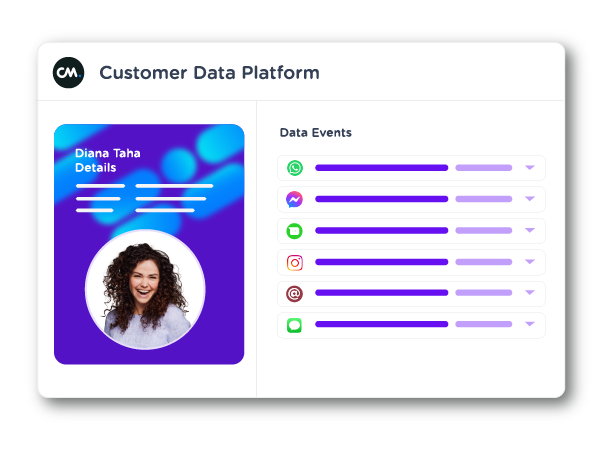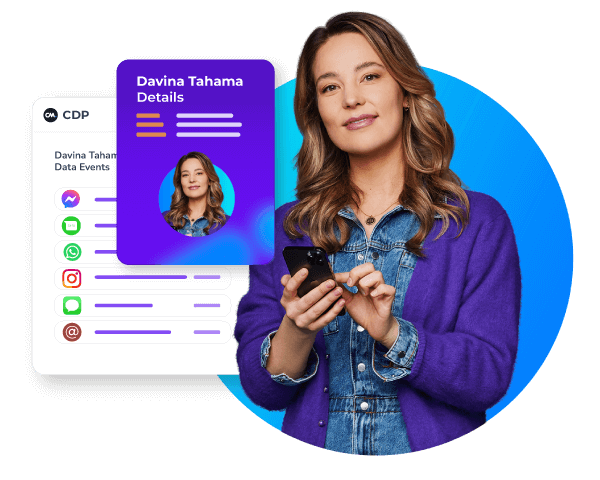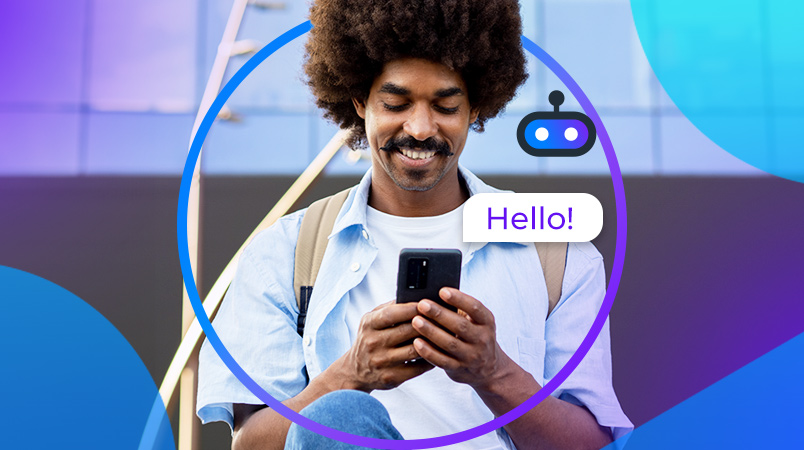The reach of marketing channels has been expanding over time; starting with newspaper ads and local radio reaching a region to new ad networks such as Facebook and Google reaching half the globe. And not only the reach is expanding, the insights into the audience, as measured in actual data about the individuals, are growing. Using this information, you can create very specific segmentations that will allow marketers to target those profiles that are highly relevant and receptive to your information.
6 reasons why you need a CDP
If you are able to build your own database of individuals and keep learning to know these people, you will be able to create very focused segments. And when combined with real-time data about behaviour, this could lead to the holy grail of a “segment of one”. Where every person will be treated as their own segment, being informed with a completely personal message, at a personal place and time through a personal channel.

A CDP collects all your data
The amount of information all of us need to process is getting larger continuously. Martin Hilbert of the University of California estimated in 2010 that “in 1986 we received around 40 newspapers full of information every day but this had rocketed to 174 in 2007”. That is a growth of over 7% per year, so each year we process a few additional newspapers every day. Extrapolating this linearly to 2022 it would mean we all process the equivalent of 492 newspapers each day.
In their 2014 report “The digital universe of opportunities” IDC estimates that by 2020 [the digital universe] contain[s] nearly as many digital bits as there are stars in the [physical] universe. It is doubling in size every two years, and by 2024 the digital universe – the data we create and copy annually – will reach 149 zettabytes. The amount of data in the world growing even faster than we can process it.
A CDP makes personalisation possible
So our brains are swamped with information every day, how do we manage to get by? That is because our brain incorporates some great attention filters. A good example of this was popularised by Colin Cherry’s “Cocktail Party Effect”; how can a partygoer focus on a single conversation in a noisy room? That is because your brain applies selective filtering to all information that your senses take in. And only the things that are relevant to you, because you care, or it threatens you, will be noted consciously.
This filtering system also filters all the information that is presented to us in everyday life. Only the bits of information that mean something to us are kept, the others are ignored. To come full circle again, as a marketer, how can you increase the chance that your communications are not excluded by these filters? Make sure that your communication is relevant to the person that is receiving it. The more personalised the better.
A CDP activates all your data
The Customer Data Platform (CDP) brings all your marketing data together to build a full (360-degree) profile of the customers. This has been the promise of many marketing data solutions, but only recently using Big Data technology and open APIs, we are now able to deliver on this vision.

With access to rich profiles, your CDP can orchestrate and automate communication with your customers or prospects. The finer-grained your understanding of a person is, the better you can target them with information that is relevant within the context they currently are in. Truly connecting over topics of interest. And it should be a conversation instead of a marketing push, there should be an opportunity to respond. This will help us to get to the promise of a segment of one, because every conversation can be geared towards every individual, at their terms.
A CDP is not a CRM or DMP
Often, people get confused within the large landscape of marketing tech and think their CRM or DMP can deliver on these promises. This is usually not the case. Customer Relationship Management (CRM) software contains much fewer data from external sources than a CDP. They are much more geared towards sales and require sales reps to reach out to customers and prospects to take note of their conversations. A Data Management Platform (DMP) contains unpersonalised data that is usually collected by large ad networks tracking online click behaviour. A DMP is used to target online ads, as opposed to a CDP that contains personalized data and is used to target personal communication.
Also read: CRM, CDP and DMP Platforms: How Are They Different?
A CDP stores all your data
Theoretically, everything that is personalised can be stored and added to specific customer profiles. If it cannot be tied to a person in any way, the data cannot be added to a profile and will not increase your effectiveness. We usually see data from one of the categories below:
Personal information, for example, name, address, country of residence, date of birth
Contact information, such as email address, mobile phone number, Facebook id (PSId), WhatsApp enabled? Consent management should be included as well.
Transactional or eCommerce data, such as purchase value, products, sizes, shop location, customer value, basket abandonment, etc. But also using loyalty cards or coupons connecting the bricks visitor to her clicks online.
Web and behavioural data, such as page views, clicks, apps used, and buttons clicked. Think of the Google Analytics of a single person.
Satisfaction scores from reviews, inquiries, feedback forms, NPS, CSAT, etc.
Contextual information, such as the weather, holidays, income based on postal codes, and credit risk scores are typically used to enrich the data events.
In general, this data is called first-party data, or “your data”. High in value, real-time, and personalised. As opposed to second or third-party data, which is usually bought or accessed through data marketplaces or ad exchanges. Such data is not personalised and can only be used for category or interest targeting.
A CDP automates workflows
Imagine running a soccer team. You have two major revenue drivers: seats & sponsoring. As a commercial director, you want to fill the stadium to capacity and get the most out of sponsorship deals you set up. About 81% of your stadium is filled by seasonal ticket holders. How are you going to fill up the remaining seats?
If you know who previously visited matches, and the conditions (weather, opponent, seat type, etc.) in which they visit, you can reach out to the audience that is most likely to repeat that visit. Perhaps we know a certain John who visited the same match last year, you know that game was won, and he stayed for the after-party as you can see in his bar purchases. In this case, we can reach out directly to John, informing him about the match coming up again and offering a small discount and a quick ticket purchase link. If you would also be able to persuade him to bring in a friend and/or come early, you can increase the financial value of his visit. And this can be automated to reach out to a large group of fans.
This is a great innovation in a market where sports teams usually don’t even know who most of their fans are. And think of the possibilities where you can build with these types of solutions. And the benefits not only pertain to the sports industry, we see great examples in leisure and retail & eCommerce.
Why is a Customer Data Platform important?
So to wrap up, we all have too much information to process. So our brains are on the heavy filter mode. To reach your audience, you need to pass through the filters by being very, very, very relevant. A Customer Data Platform is your tool to help you to achieve this. It stores all your marketing data into profiles, and you can use these profiles to orchestrate meaningful conversations with your customers.









